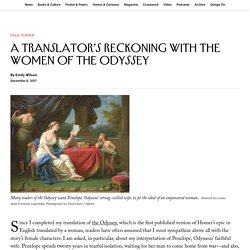

MEETING THE ENEMY A feminist comes to terms with the Men's Rights movement. Eu.usatoday. Some experts say the key to living happily ever after could be limiting your kids' exposure to their favorite princesses.

If you're one of the many parents who has the soundtrack of Frozen playing on repeat in your head, you certainly know Elsa. And Anna. And probably Moana, Mulan, Ariel, Tiana, Belle and even Elena — to name a few. Everything from Band-Aids, to bottled water, to training pants are plastered with their smiling faces. "Princess culture," as it's been dubbed by psychologists, is inescapable among the preschool set and can leave parents royally confused. Some argue the princess obsession is harming girls. She became interested in what she calls the “princess industrial complex” when she noticed her daughter drawn into the explosion of princess-related merchandise everywhere she turned.
The princess culture can lead you "to the next phase, which is what I call the Kardashianization of girlhood,” Orenstein said. There is some science to back up the critics. The movies The merch. What’s Wrong With Cinderella? I finally came unhinged in the dentist’s office — one of those ritzy pediatric practices tricked out with comic books, DVDs and arcade games — where I’d taken my 3-year-old daughter for her first exam.

Until then, I’d held my tongue. I’d smiled politely every time the supermarket-checkout clerk greeted her with “Hi, Princess”; ignored the waitress at our local breakfast joint who called the funny-face pancakes she ordered her “princess meal”; made no comment when the lady at Longs Drugs said, “I bet I know your favorite color” and handed her a pink balloon rather than letting her choose for herself. Maybe it was the dentist’s Betty Boop inflection that got to me, but when she pointed to the exam chair and said, “Would you like to sit in my special princess throne so I can sparkle your teeth?”
I lost it. A Translator’s Reckoning With the Women of the Odyssey. Since I completed my translation of the Odyssey, which is the first published version of Homer’s epic in English translated by a woman, readers have often assumed that I must sympathize above all with the story’s female characters.

I am asked, in particular, about my interpretation of Penelope, Odysseus’ faithful wife. Penelope spends twenty years in tearful isolation, waiting for her man to come home from war—and also, as it happens, from the cave and bed of two beautiful goddesses—while caring for her son and warding off the advances of her abusive suitors. At the same time, she manages to fool the suitors with her sneaky trick of weaving by day and unpicking her work at night, telling them that she can never marry until her project is finished. Moreover, she successfully needles her husband by pretending to have moved the bed that he constructed out of a still-living olive tree, a reminder that she has the power to hurt him by sleeping with another man. And flow again. HuffPost is now a part of Verizon Media. This article is updated from a version published earlier this year in Role/Reboot.

One day when my daughter was in third grade, she had to explain to a classmate what sexism was. Four kids -- two boys and two girls -- had been put in a reading group together, given a basket full of books and asked to talk about them and decide together which one they wanted to read and discuss. As they went through their choices, the boy picked up a book whose cover showed an illustration of a woman in a hoop skirt.
He quickly tossed it aside. My daughter suggested that it might be good, and asked if he'd already read it, because she would like to. "Do you know how many books with boys in them I read? " Frankly, today, I'm pretty certain that what she, a 9-year old, told her classmate was more than most adults can muster. Do you know what percentage of children's books feature boys? . Must monsters always be male? Huge gender bias revealed in children’s books. Male characters are twice as likely to take leading roles in children’s picture books and are given far more speaking parts than females, according to Observer research that shines a spotlight on the casual sexism apparently inherent in young children’s reading material.

In-depth analysis of the 100 most popular children’s picture books of 2017, carried out by this paper with market research company Nielsen, reveals the majority are dominated by male characters, often in stereotypically masculine roles, while female characters are missing from a fifth of the books ranked. The 2017 bestseller list includes perennial favourites The Gruffalo, Guess How Much I Love You and Dear Zoo, in which all the animals are referred to by a male pronoun, as if by default. The lead characters were 50% more likely to be male than female, and male villains were eight times more likely to appear compared to female villains. “Authors and illustrators have fantastic opportunities to break down stereotypes.